Push the potential of
Neuroscience
Making new discoveries in a collaboration between academia, industry, and healthcare systems.
In Denmark, Neuroscience goes beyond the lab—it touches lives.
As a hub for cutting-edge brain research, Denmark offers you the environment to explore the science of well-being and create real-world applications that improve health and quality of life.
Our universities and research centres are recognised for their pioneering Neuroscience programs, and a culture of strong collaboration between academia, industry, and the healthcare system brings together researchers, clinicians, and businesses so they can accelerate scientific breakthroughs.
A global outlook is part of the package, and as a researcher here, you will be part of an international community and cross-border initiatives with global impact.
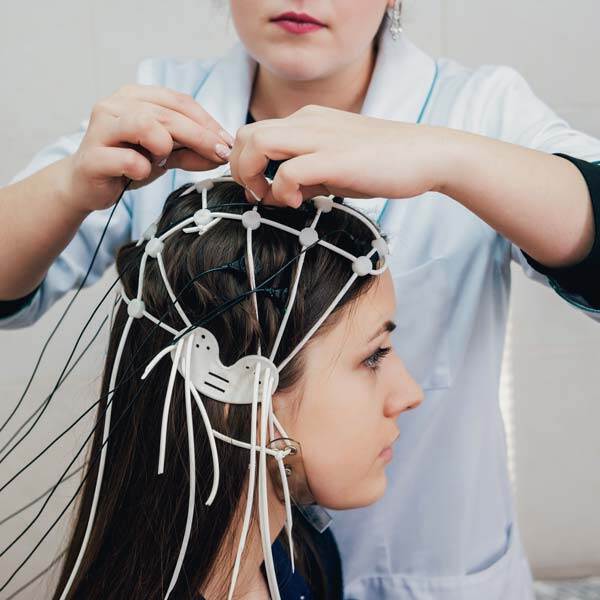
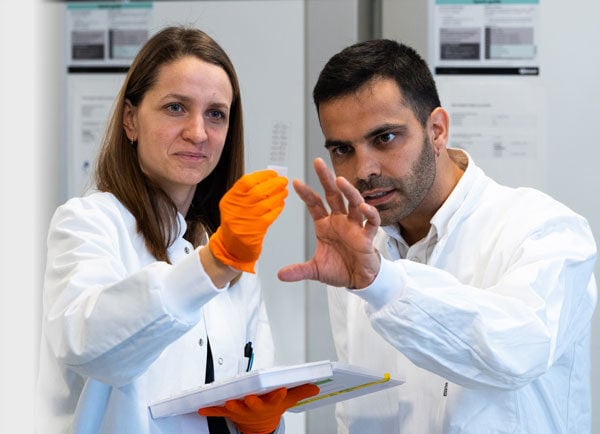
Daniel Rasmussen
Open research positions in Neuroscience
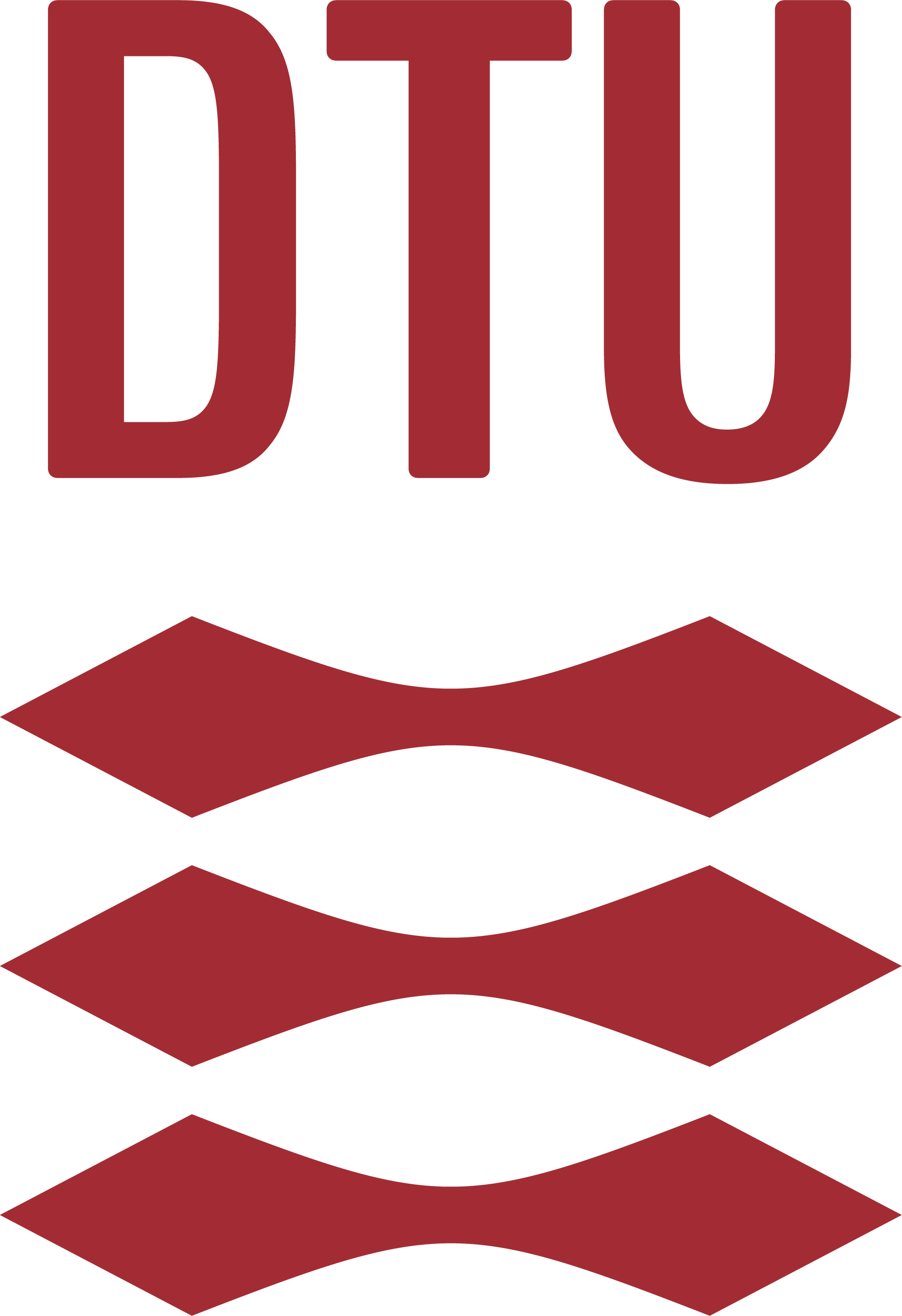
PhD scholarship in Computing Parallelism Enabled by Photonic Integrated Circuits - DTU Electro
The PhD student will participate in an international team in an EU-funded Doctoral Network project called MINDnet. The project consists of 15 Ph.D. students at 7 universities, one research center and two companies. The project has partners from eight different EU countries. All 15 Ph.d. projects are within the overall theme of neuromorphic computing and analog signal processing, targeting applications in the fields of communication, sensing, geolocalization, space and biomedical. This Ph.D. project will take place at DTU Electro. Apart from the time at DTU there will be secondments of minimum 3 months at University of Pisa (IT), Fraunhofer Heinrik Hertz Institute (DE) and Spincloud (DE). There will also be regular meetings with the other 14 Ph.D. students in the doctoral network, including 4 training schools and two workshops. As a participant of the project, the PhD student will become part of a team at DTU with numerical and experimental expertise in photonic computing. The activities within the project will benefit from synergies with other projects in the group as well as with other activities at the department. The main supervisor will be Assoc. Prof. Francesco Da Ros, DTU Electro.
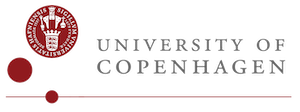
Associate Professor Research Group Leader(s) at the Biotech Research and Innovation Centre (BRIC), U...
BRIC is recruiting 1-2 strongly motivated scientist(s) for a junior research group leader position. We are seeking excellent group leader colleagues with compelling research visions within the broad area of biomedical research and motivation to contribute to a diverse and inspiring research environment. The position offers a unique opportunity to develop your own line of research. You may come directly from a postdoc or similar position or be within three years of starting as an independent group leader. The workplace BRIC is an international centre of excellence with the mission to perform cutting-edge basic and translational biomedical research. As a group leader, you become part of an open community that fosters interdisciplinarity and collaboration. Active research areas include many aspects of cancer biology, stem cell biology, and neurobiology. The centre is part of the Faculty of Health and Medical Sciences, University of Copenhagen. Situated in the heart of Copenhagen, Denmark, you will experience a highly inclusive and egalitarian work environment. International researchers benefit from a high standard of living, flexible working conditions, efficient public infrastructure, and relocation assistance through the University’s International Staff Mobility office. Copenhagen is a safe, family-friendly city with a vibrant cultural life and easy access to nature. Inquiries are welcome to director Anders H. Lund (bric-director@bric.ku.dk)

PhD fellowship or postdoc in brain tumor bioinformatics at BRIC
The selected candidate will be part of professor, consultant neuropathologist Bjarne Winther Kristensens research group (https://www.bric.ku.dk/research-groups/kristensen-group/). Bjarne Winther Kristensen will be the principal supervisor. A main interest in the group is how the tumor microenvironment influences brain tumor aggressiveness and therapy response and how this differs across types, subtypes and regions of brain tumors. Most of our projects focus on glioblastoma. Your job You will join a multi-disciplinary research team that work with both patient tumor tissue, experimental in vitro and in vivo brain tumor models and advanced bioinformatics. The main tasks in the PhD or postdoc project will be to bioinformatically investigate tumor cells and the tumor microenvironment in histologically distinct glioblastoma patient samples and correlate these findings with clinical outcomes. Part of the project will also include analysis of samples from patient-derived animal models. The project uses cutting-edge spatial transcriptomics technologies that enable gene expression to be measured directly within intact tumor sections, preserving the spatial relationships between malignant, stromal, and immune cells. The ideal candidate should have a background in biological sciences and have experience in either data analysis of high-plex spatial transcriptomics or single-cell/nuclei RNA sequencing or have experience in R or python. Questions For specific information about the PhD pr postdoc fellowship, please contact professor Bjarne Kristensen, email: bjarne.winther.kristensen.01@regionh.dk

PhD scholarship in Photonic Reservoir Computing in Coupled Resonant Structures - DTU Electro
The Machine Learning in Photonic Systems group at DTU Electro at the Technical University of Denmark is seeking a candidate for a PhD position to research multiplexing in photonic integrated circuits for enhancing computing efficiency through parallelism. The PhD student will participate in an international team in an EU-funded Doctoral Network project called MINDnet. The project consists of 15 Ph.D. students at 7 universities, one research center and two companies. The project has partners from eight different EU countries. All 15 Ph.d. projects are within the overall theme of neuromorphic computing and analog signal processing, targeting applications in the fields of communication, sensing, geolocalization, space and biomedical. This Ph.D. project will take place at DTU Electro. Apart from the time at DTU there will be secondments of minimum 3 months at Technical University of Illmenau (DE), HPE (BE) and University of Trento (IT). There will also be regular meetings with the other 14 Ph.D. students in the doctoral network, including 4 training schools and two workshops. Further information Further information may be obtained from Assoc. Prof. Francesco Da Ros (fdro@dtu.dk).

14 postdoctoral fellowships to the BRIDGE – Translational Excellence Programme
The BRIDGE – Translational Excellence Programme at the University of Copenhagen is seeking 14 highly motivated and dynamic postdoc fellows to commence the BRIDGE – Translational Excellence Programme on 1 September 2026. The BRIDGE – Translational Excellence Programme is financed by the Novo Nordisk Foundation with the ambition to train fellows in translational medicine, mentored by fully committed and top-level professionals in basic biomedical research, a clinical environment and the life science industry. The programme constitutes a clear career path for candidates whose ambition is to bridge the gap between research, patient care and the life science industry and for those wishing to become pioneering leaders in the field of translational medicine. The BRIDGE – Translational Excellence Programme expects to appoint 7 fellows with an MD background and 7 fellows with an MSc background. The fellow will be appointed in the lab of the basic mentor either at the Faculty of Health and Medical Sciences (SUND) or the Faculty of SCIENCE (SCIENCE), UCPH.

Morten Meldal PhD fellowships in Chemistry
We are looking for strong candidates within the broader field of Chemistry. Applicants should hold a MSc or a BSc degree related to one or more of the areas of experimental and theoretical chemistry listed above, with excellent results and good English language skills. Please note that if you expect to obtain a MSc degree before August 2026, but do not have it at the deadline of this call, you must apply for the integrated PhD program (option B).

Postdoc in brain resilience to heat
In this project, your main task will be to determine the mechanisms of brain resilience and adaptation to heat at circuit and cellular levels, by using quantitative behavioural assays, in vivo calcium imaging and opto/chemogenetics. You will play a key role in establishing or refining the imaging and data analysis protocols and have a large degree of freedom in shaping the project, depending on your experience. You will have the opportunity to grow your professional network by participating in relevant conferences. You will actively contribute to the team’s scientific goals by training and supervising junior scientists. Contact Florence Kermen E-mail: hkl387@ku.dk
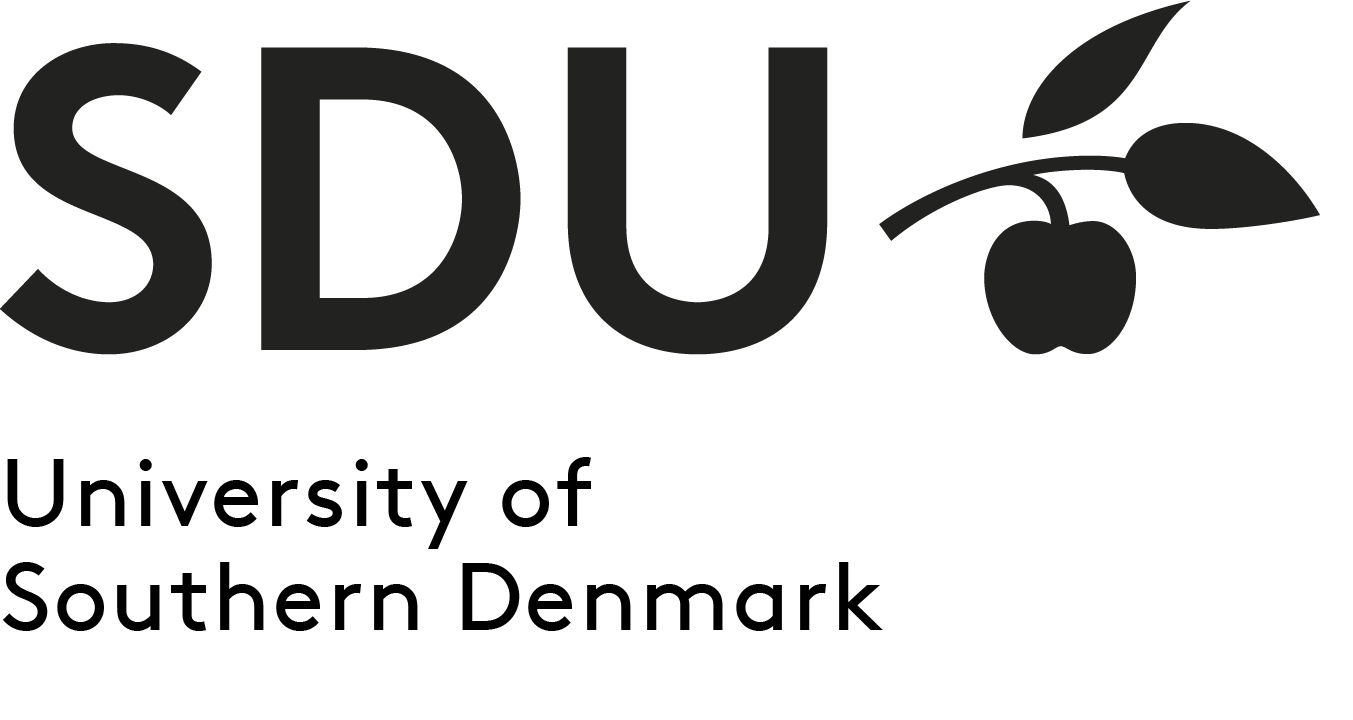
Declaration of interest regarding PhD project in Neurology
The Department of Neurology, Department of Clinical Institute, SDU/Odense University Hospital and Neurobiology Research, Department of Molecular Medicine at SDU and are looking for applicants for a PhD scholarship within the field of Neurology. We are looking for a person with a relevant degree in Medicine (MD). Research environment In our laboratory we are studying cardiometabolic diseases (MetSy), such as stroke to try to understand the cellular and molecular mechanisms that contribute to impaired functional outcome. We have one main research objective, which is to study the neuro-inflammatory response that occurs following ischemic stroke with the aim of contributing to the development of novel therapies to improve outcome for stroke patients. We work closely with clinical translational research labs on neurovascular disease. This is a joint project with Dept. of Brain and Spinal Cord Injury, Rigshospitalet, Copenhagen, where part of the project will take place. Project description Ischemic stroke (IS) is a leading cause of death and disability worldwide. Early reperfusion and admission for stroke unit care are imperative to improve the final clinical outcome. However, this re-establishment is only offered to approximately 20% of all patients in Denmark. The induced ischemia initiates a cascade of complex responses that may lead to chronic inflammation. In this project, we aim to pave the way for a paradigm shift in IS treatment, centered on the vision that active resolution of post-stroke inflammation and improved remyelination processes can be obtained by blocking detrimental and boosting pro-regenerative inflammatory processes. We will characterize the sex-specific effects of MetSy on post-ischemic stroke recovery in human ischemic stroke cases and help identify promising therapeutic compounds to improve functional outcomes in ischemic stroke cases with MetSy-related comorbidities. The PhD candidate is expected to work on investigating how sex-dependent low-grade systemic inflammation caused by MetSy affects neurological outcome in IS patients. This will be performed in clinical cohorts, using clinical and paraclinical data and performing analyses on sex-specific correlations between metabolic biomarkers in the blood and cognitive scores, as wells as between biomarkers and MRI evaluations of lesion size and edema formation. Professor Helle Hvilsted Nilsen Department of Neurology and Department of Clinical Research Odense University Hospital and SDU E-mail: helle.hvilsted.nielsen@rsyd.dk Professor Kate Lykke Lambertsen Neurobiology Research Department of Molecular Medicine University of Southern Denmark (SDU) Tlf. +45 6550 3806 E-mail: klambertsen@health.sdu.dk

Postdoc in Computational Biology
Applications are invited for a position as postdoc in Computational Biology in the laboratory of DNRF Chair and Novo Nordisk Faculty Professor Vijay Tiwari (https://www.tiwarilab.org/) at the Department of Molecular Medicine, SDU. The position is available from April 1, 2026, or as soon as possible thereafter, for one year with the possibility of extension for up to 3 years. Tiwari Lab Tiwari lab employ cutting-edge single-cell and spatial omics technologies with bioinformatics and machine learning to decipher principles of gene regulation underlying cell identity and its disruption in human diseases. In this project, the candidate will develop new computational strategies to identify human genetic variation linked to cell fate changes in neurodevelopmental disorders and cancer. The candidate can use and combine various cutting-edge data modes such as single-cell ATAC-seq, single-cell RNA-seq, spatial gene expression, and whole-genome sequencing. The candidate will get the opportunity to explore new analysis methods using deep learning. Depending on the interest, it is also possible to be involved in the wet lab. Professor Tiwari also leads the Center for Integrated Multiomics in Precision Medicine, the Translational Cancer Hub, and the Danish Neurodevelopmental Disorders Consortium. He also serves as a Chair at the Danish Institute for Advanced Study (DIAS), a research center dedicated to fostering groundbreaking ideas through cross-disciplinary collaboration. In addition, Professor Tiwari is affiliated with Odense University Hospital, facilitating translational research and enabling close partnerships with clinicians. Together, these initiatives provide ample opportunities for the recruited postdoc to build networks, establish collaborations, and advance their career development. Contact Information For further details about the position, please contact Professor Vijay Tiwari at tiwari@health.sdu.dk To learn more, please refer to the selected publications from the Tiwari lab:
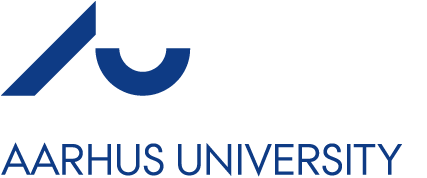
Assistant Professor Translational nano-psychobiology
The Translational Neuropsychiatry Unit, part of the Department of Clinical Medicine at the Faculty of Health, Aarhus University, invites applications for a position as Assistant Professor in the field of nano-psychobiology as per 01 March 2026 or as soon as possible thereafter. The position is a fixed-term full-time position for 3 years. As Assistant Professor in nano-psychobiology, you will lead and collaborate on high-impact research focused on brain-derived extracellular vesicles (EVs) and their roles in neuropsychiatric and neurodevelopmental disorders. You’ll teach at undergraduate and graduate levels, mentor early-career researchers, and play an active part in the department’s academic community. Questions about the position If you have any questions about the position, please contact Gregers Wegener tel.: (+4551717403). Your place of work will be the Department of Clinical Medicine, Palle Juul Jensens Boulevard 11, 8200 Aarhus N, Denmark.

Assistant Professor, Associate Professor or Full Professor of Cognitive Science
The position will be affiliated with the Department of Linguistics, Cognitive Science and Semiotics (LICS) at the School of Communication and Culture. LICS offers Bachelor’s and Master’s degree programmes in linguistics and cognitive science. We are looking for an applicant who can strengthen our research profile in computational modelling of cognitive processes and/or computational modelling of social processes. The ideal applicant will contribute to the department’s collective research on cognitive and social processes and to the continued development of courses on mathematical and computational modelling of cognition within our BSc and MSc cognitive science programmes. We are looking for an innovative and dedicated applicant who will enhance the department’s research and teaching profiles nationally and internationally, and who will contribute to Aarhus University’s core activities in research, teaching and supervision, talent development, and knowledge exchange. For the assistant professor position, we are looking for applicants with teaching experience in the field of computational modelling of cognitive and/or social processes at the university level. The person appointed to the post of assistant professor must complete Aarhus University’s teacher-training programme for assistant professors designed for university teaching. Contact For further information about the position, please contact Joshua Charles Skewes, Head of the Department of Linguistics, Cognitive Science and Semiotics, by tel.: +45 8716 2653 or by email: filjcs@cc.au.dk. If you need help uploading your application or have questions about the recruitment process, please contact Arts HR support by email: hsi@au.dk.

Researcher in Detection of Weak Magnetic Signals generated by Active Neurons at the Department of Ne...
The BIO-MAG project is looking for a highly motivated and dynamic researcher with interest in Neurophysiology for a 4-year Researcher position to start at April 1st 2026, or after agreement. The specific aim of the current position is to develop original biological preparations that will be used for the detection of magnetitic field generated by evoked action potentials. The DTU teams will develop novel Extraordinary Magnetoresistance (EMR) sensors (See Park et al., 2020: https://www.nature.com/articles/s41467-020-17377-0) and color center magnetometers (see Webb et al., 2021: https://www.nature.com/articles/s41598-021-81828-x). Your task will consist in testing the ability of these sensors to detect neuronal activity in slice preparations and eventually in vivo. For further information please contact, please contact Associate Professor Jean-François Perrier, e-mail: perrier@sund.ku.dk.

Director of new research centre in biological psychiatry with focus on brain circuit dysfunction
As director you have the freedom, within the framework of the centre’s objectives, to develop a research plan and define the scientific direction of the centre. Upon final approval of the research plan, you will be responsible for establishing the centre and its operations, providing strategic leadership and ensuring successful implementation of the founding research vision. You will be leading the activities of the centre, including group leader recruitments and the establishment of co-located translational research environments. In this role, you serve as a strategic leader, coordinating and facilitating activities both within the centre and across the organisations with which it interacts. Furthermore, as a successful director, you: Are highly motivated by and committed to the mission of the centre Demonstrate visionary leadership with the ability to define strategy and drive its execution Are dedicated to mentoring, training, and upholding the EMBL mission Foster a culture of trust, collaboration, and academic excellence Provide clear direction and ensure coherence and identity across the centre Build strong partnerships with national and international partners Serve as an excellent ambassador promoting the visibility and reputation of the centre For further information on the position and our vision for the centre, please contact one of the following for a confidential conversation: Professor Thomas G. Jensen, Head of Department of Biomedicine (thomas@biomed.au.dk, +4527782805) Professor Poul Nissen, Vice-Dean of Research, Faculty of Natural Sciences (pn@au.dk, +4528992295) Professor Anne-Mette Hvas, Dean, Faculty of Health (dean.health@au.dk, +4587152007)

Professorships in Psychology
The announced professorships are permanent positions with research and teaching obligations within the specified fields outlined above. The successful candidate is expected to take on responsibility for research leadership with regard to developing the dedicated field, publish in international peer-reviewed journals, attract external funding, develop courses and methods, participate in the Department's day-to-day activities (lecturing, seminars, workshops, etc.), undertake supervision of students, PhD students and junior researchers as well as participate in administrative and organizational tasks. Your qualifications To be considered for shortlisting, applicants must indicate which specific subfield (and potentially another supplemental subfield) they want to apply within. Relevant candidates are expected to have published a substantial amount of research at a high international level, have succeeded in attracting external funding, have experience with high-quality research leadership and PhD supervision as well as substantial, high-quality teaching within the subfield specified by the applicants. As the successful candidates must participate in all of the department's main activities, including teaching, examination and administration related to the subfield, non-Danish speaking candidates are required to acquire the necessary language skills within a short period of time (max. 2 years). Further information For further information about the position, please contact: Head of department, professor, Jan Tønnesvang, e-mail: jan@psy.au.dk

Aarhus University is hiring Assistant, Associate and Full Professors for the Department of Computer ...
The department consists of four Sections: Algorithms, Data and Artificial Intelligence; Cryptography and Cybersecurity; Human-Centered Computing; Programming Languages, Logic, and Software Security. We are looking for applicants to strengthen and expand the research in the above Sections, but topics beyond, or across sections are also welcome. We are, in particular, looking for applicants with competencies in topics like: Machine Learning/Artificial Intelligence, NLP/Large Language Models, Generative AI, Theoretical Computer Science, Economics and Computation, Software Architecture, Software Engineering, Quantum Programming, Quantum Information Processing, Quantum Cryptography, System/Network Security, Systems and Networks, Human-AI-Interaction, Computer-Supported Cooperative Work, Tangible/Physical Computing. We are looking for tenure-track Assistant Professors, Associate Professors and full Professors. We generally encourage candidates within all areas of Computer Science – not restricted to the mentioned topics – to apply. Further information on the position can be obtained from Head of Department, Professor Kaj Grønbæk kgronbak@cs.au.dk.

Clinical Professor of Neurosurgery with special focus on clinical research within neurosurgery (Fixe...
The University seeks to appoint a clinical professor of Neurosurgery with special focus on clinical research to commence as soon as possible. The externally funded professorship is combined with a consultancy at Copenhagen University Hospital - Rigshospitalet, Department of Neurosurgery in the Capital Region. It is a requirement for appointment that the applicant is accepted for both the professorship and the consultancy. In order to be considered for the position, the applicant must send two applications: one to the Faculty (the professorship) and one to the hospital (the consultancy) cf. the simultaneously advertised position of the consultancy. This also applies to applicants who are already employed as consultants at the Hospital. Please find the advertisement for the consultancy here. Both the professorship and the consultancy will be financed by Copenhagen University Hospital - Rigshospitalet. ID: 152464 Questions For further information please contact Head of Department Jesper Hastrup Svendsen, jesper.hastrup.svendsen@regionh.dk.

Postdoc of Molecular Cell Biology of DNA repair
Department of Biology, Section for Functional Genomics, invites applicants for a postdoc in Molecular Cell Biology of DNA repair. The position is part of the research project “Genome integrity maintenance by liquid-liquid phase separation and oscillations”, which is financed by the Carlsberg Foundation. The aim of the project is to study the role of liquid-liquid phase separation in facilitating DNA repair processes in the cell nucleus as a model to establish a fundamental biological understanding of how biomolecular droplets allow the cell to orchestrate its biochemical processes. We will achieve this through a cross-disciplinary effort that combines molecular genetics and state-of-the-art microscopy with biophysical modelling and computational simulations. The project is a collaboration with Professor Mogens Høgh Jensen at the Niels Bohr Institute, University of Copenhagen. Further information on the Department is linked at https://www.science.ku.dk/english/about-the-faculty/organisation/. Inquiries about the position can be made to Professor Michael Lisby, Department of Biology, mlisby@bio.ku.dk, Direct Phone: +45 35322120.

Clinical Professor of Digital Psychiatry
The University seeks to appoint a clinical professor of Digital Psychiatry to commence as soon as possible. The externally funded professorship is combined with a consultancy at the Mental Health Centre Copenhagen at Copenhagen University Hospital, Mental Health Services in the Capital Region. It is a requirement for appointment that the applicant is accepted for both the professorship and the consultancy. In order to be considered for the position, the applicant must send two applications: one to the Faculty (the professorship) and one to the hospital (the consultancy) cf. the simultaneously advertised position of the consultancy. This also applies to applicants who are already employed as consultants at the Hospital. Please find the advertisement for the consultancy here. Questions For further information please contact Head of Department Jesper Hastrup Svendsen, jesper.hastrup.svendsen@regionh.dk. ID: 152030

DIAS Assistant Professor in Cognitive psychology, Clinical psychology, or Health psychology
The Danish Institute for Advanced Study (DIAS) and the Department of Psychology at the University of Southern Denmark (SDU) seek an outstanding candidate to fill a position as tenure track* assistant professor / DIAS-fellow in the field of either cognitive psychology, clinical psychology, or health psychology. The candidate is expected to start on September 1, 2026, or as soon as possible thereafter. We are looking for a researcher with clear potential for research excellence who thrives in and is inspired by interdisciplinary collaboration. The ideal candidate will be expected to contribute to high-quality research in their field while embracing DIAS’s mission of curiosity-driven inquiry and interdisciplinary dialogue. The successful candidate should have a strong and promising research profile, with potential for attracting external research funding, and a demonstrated ability to work across disciplines. The candidate will be attached to both the Department and DIAS and should be prepared to engage in multiple and diverse research environments at SDU. Additional information For further information about being an assistant professor at DIAS, please contact DIAS director Sten Rynning at +45 6550 2193 or by email to director-dias@sdu.dk . For more questions about the position please contact Rikke Holm Bramsen, Head of Department, at +45 6550 7251 or by e-mail to rholmb@health.sdu.dk .

Research Assistant for the Schwartz Group
The Schwartz Group interrogates peripheral and central mechanisms of homeostatic control of metabolism and seeks to leverage their discoveries to develop novel pharmacotherapies for the treatment of obesity and type 2 diabetes. Your job We are looking for an enthusiastic Research Assistant who will be part of research projects that focuses on mapping receptor expression in different neuronal populations in particular in the Dorsal Vagal Complex and in generating and in vivo testing of rodent models based on this. Questions For further information please contact Professor Thue W Schwartz, tws@sund.ku.dk. For questions regarding the recruitment procedure, please contact SUND HR CBMR at hr-cbmr@adm.ku.dk.

Tenure Track Assistant Professor in in Soft Robotics and Bioinspired Systems
This position focuses on pioneering research that integrates the full soft robotics pipeline—from conceptual design to functional realization. We seek a candidate with a comprehensive and well-documented research profile, demonstrating a strong foundation in both theoretical and experimental robotics. The ideal applicant will bring expertise in the design and fabrication of soft robots, including the innovative use of functional materials such as metamaterials and composites, as well as experience in automated fabrication and mechanical characterization. A solid background in modelling and system identification is essential, with particular emphasis on data-driven and machine-learning–based approaches for soft and continuum systems. The candidate must also demonstrate proven experience in embedded perception—covering data acquisition, signal processing, and sensor integration—and in the development and implementation of advanced control strategies. Ultimately, we seek an individual with demonstrated capability in system integration: the ability to combine these disciplines into fully functional robotic systems for applications in bio-inspired locomotion, manipulation, and wearable technologies. Further information For further information please contact Head of Department Kasper Hallenborg (email: hallenborg@sdu.dk) or Professor Ahmad Rafsanjani (ahra@sdu.dk). If you experience technical problems, please contact hcm-support@sdu.dk.
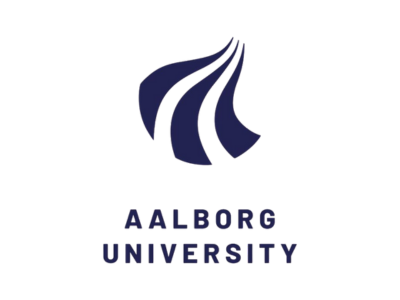
Post doc in clinical psychology
At the Department of Communication and Psychology, the Faculty of Humanities, Aalborg University, a position as Postdoc in clinical psychology will be open for appointment as of 1st of February 2026 or as soon as possible thereafter (dependent on sufficient funding). The Postdoc will be a part of the project “Best for Us”, a research project funded by Novo Nordisk. The appointment will be a fixed term (2 years and 11 months), full-time position, which will include both research and teaching activities. The position will primarily be attached to the section Psychology of Culture, Humanity and Education (Psyche), which: Brings together diverse perspectives: humanistic, educational, socio-cultural, personality and existential psychology Has a strong emphasis on interdisciplinarity and theoretical and methodological rigor Approaches research as an integrated whole, where methods, theory, and empirical work mutually enrich each other Actively contributes to public debates and societal discussions. Contacts Thomas Szulevicz: +4599407367, thoszu@ikp.aau.dk HR support: 99403031, aau-hrsupport@adm.aau.dk
From discovery to life-changing therapy
The strong integration between companies, research, and innovation means that Denmark offers unique opportunities to translate your discoveries into life-changing therapies.
Here, the biotech and med-tech sectors make a dynamic environment for collaboration, where start-ups and established companies drive advancements in neuropharmaceuticals and brain health technologies.
Our research environment is known for attracting heaps of international talent, so prepare for a diverse group of new co-workers and friends. Whether your interest is in neurodegenerative disorders, neurodevelopmental disorders, neuroinflammation, or something else, Denmark has a research community for you.
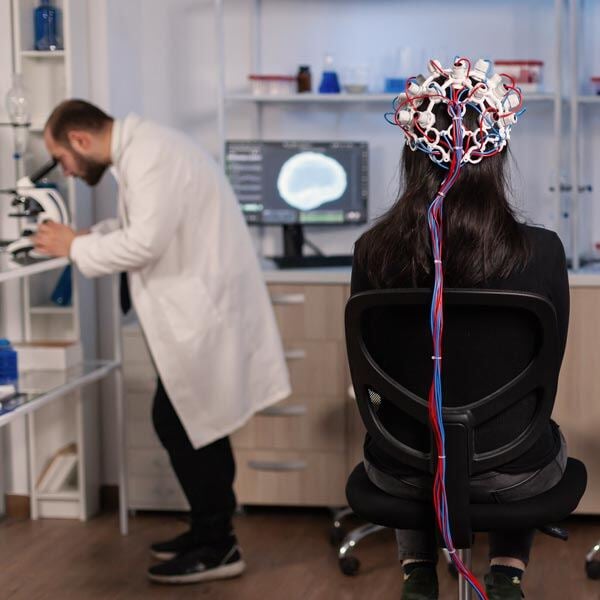
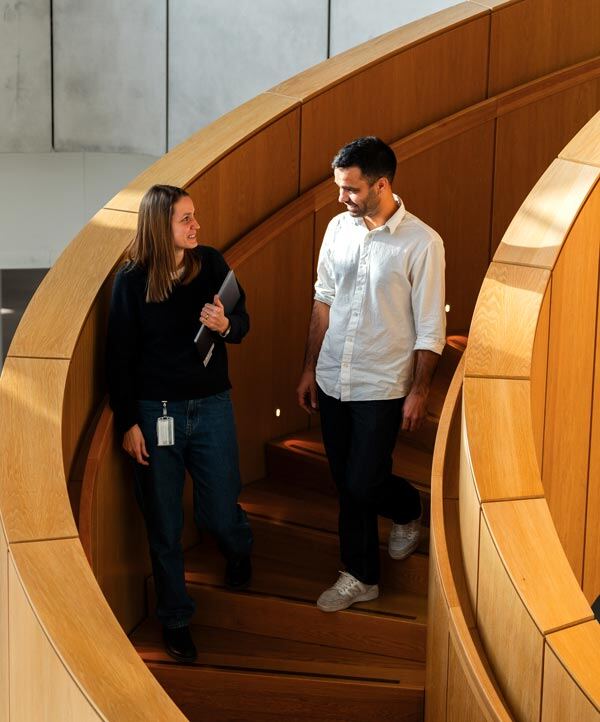
Daniel Rasmussen
Meet like-minded minds in neuroscience
Laura moved from Belgium to pursue her PhD at Aalborg University. At the Center for Neuroplasticity and Pain, she explores non-invasive vagal nerve stimulation to advance neuromodulation research.
Pedro came from Brazil to join the University of Copenhagen as a PhD student. His research in neuroscience is fueled by Denmark’s strong support system and collaborative academic culture.
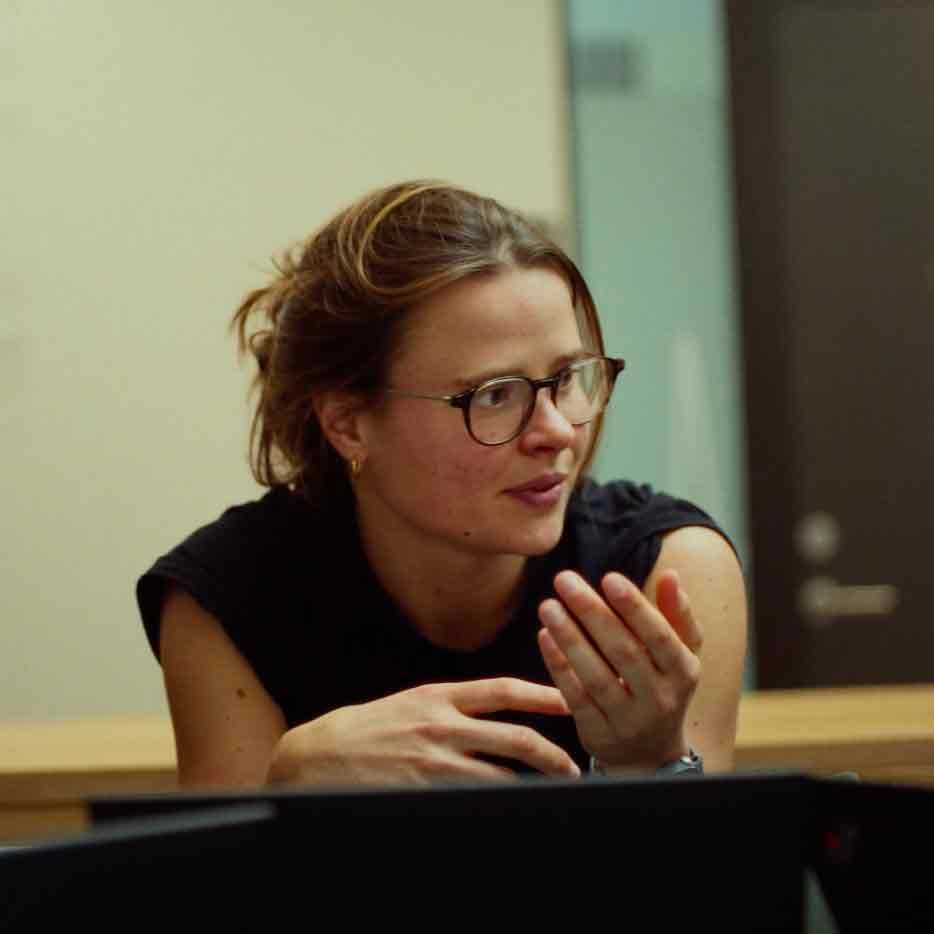

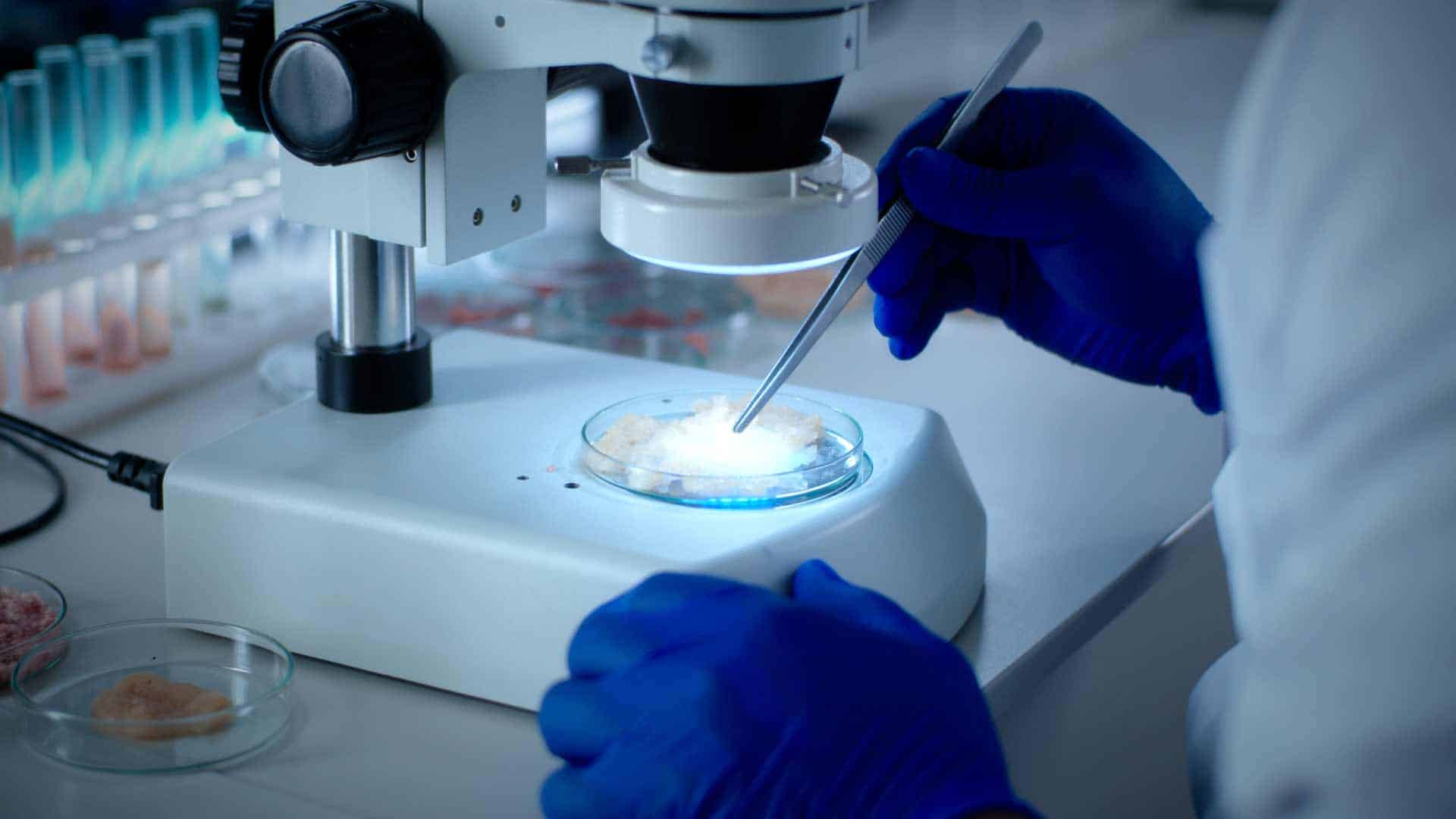
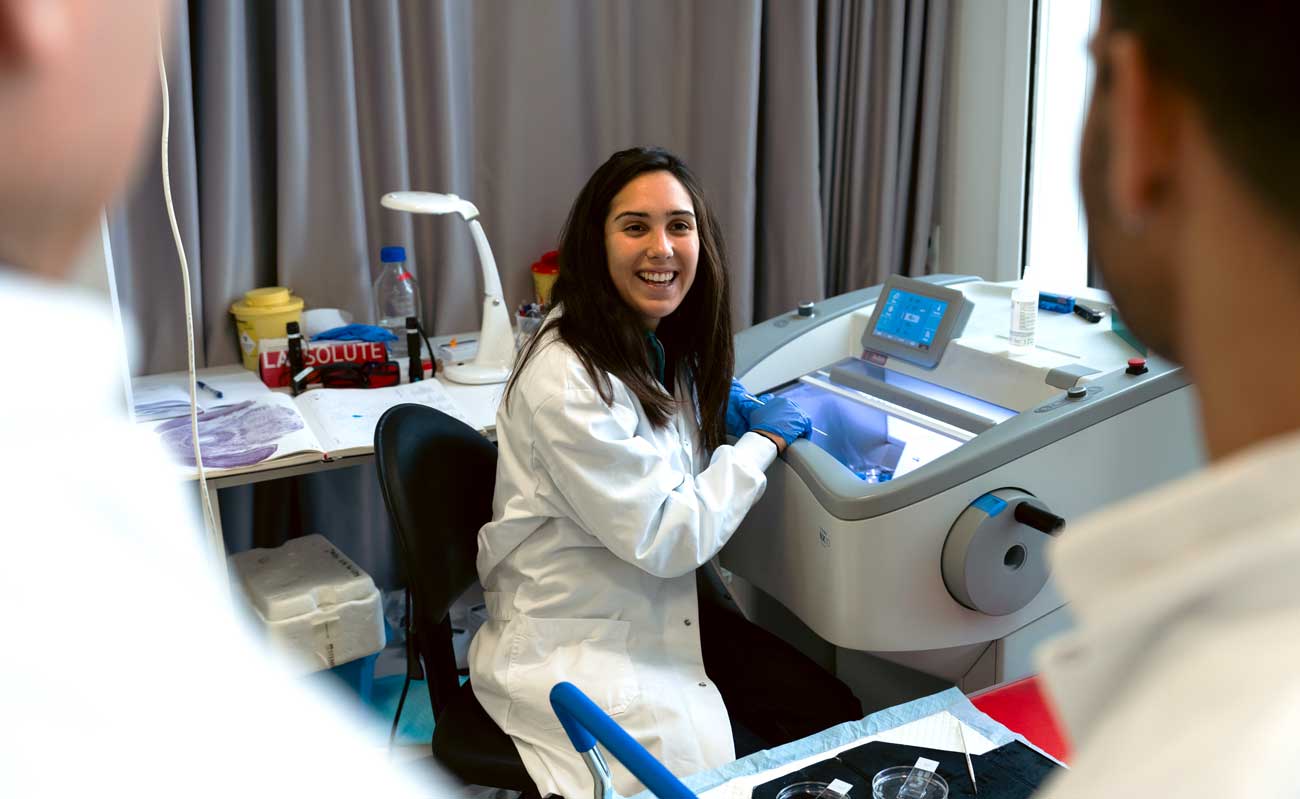
Get job alerts from Denmark
Sign up and we’ll keep you updated with exciting research career opportunities.
Social & news
